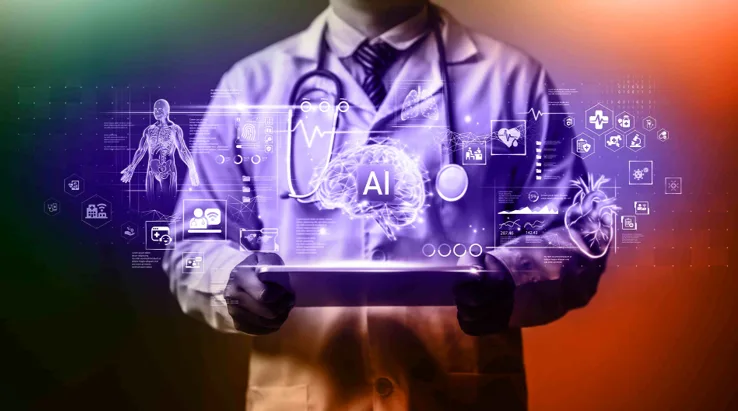
With the nonstop talk of artificial intelligence (AI) as the next major technology that will shape the future of humanity, one of the key topics being debated is whether, in balance, AI will be good for humanity. In addition to the prospect of AI-operated robots posing an existential threat to our long-term survival, there is also the issue of their threat to our livelihood. Even if we can somehow be reassured that our survival won’t be threatened by AI, what if many of us are unemployed and unable to afford a decent living?
While the debate around technology and its impact on human jobs is at least a couple of hundred years old, this latest iteration of it is quite intense and apocalyptic. Part of it may be due to the fact that, for the first time, white collar jobs are considered in jeopardy. Previously, automation and mechanization eliminated manual jobs like farming and construction, and over time, many of the displaced people moved into new “cognitive” roles.
If we now start replacing cognitive jobs like consultants and accountants, what types of roles will those people move into? Also, with AI doing some or most of the value creation around ideation, research, content creation, and more, will the wages for the available jobs of the future be far lower?
LEARNING FROM THE PAST
While it’s impossible to know for sure how AI will impact humanity, a careful analysis of such periods of rapid technological advancements can be quite instructive. In fact, dire predictions about jobs and wages as a consequence of new technologies seem to be quite easy to find in our not-too-distant past.
Subscribe to the Daily newsletter.Fast Company’s trending stories delivered to you every day
Privacy Policy
|
Fast Company Newsletters
Yet, if we look at employment numbers over time, they have grown significantly. This includes the last few years when AI has started to make its way into most industries. How about wages? Same thing. Average hourly wages have continued to grow through periods when disruptive technologies, such as electricity, the automobile, the internet, and more, rendered millions of jobs obsolete. How to explain all of this?
One theme that clearly emerges from studying disruptive technologies is that they also create demand for new products or services. If technology does nothing else, it raises expectations for our quality of life. Having a smartphone in our pockets, connecting with a doctor on those smartphones, and monitoring our health using the same devices—none of that was possible 20 years ago. Life is better indeed!
Every one of those innovations has created many new jobs that did not exist before: creating the phone and the networks supporting it, building telehealth platforms, designing health apps, and more. On the other side of all of this are some lost jobs that built analog phones and brick-and-mortar medical clinics. Looking at the employment numbers over the last 20 years, it looks like a lot more jobs were created than lost.
SHORTAGE OF RESOURCES
Another key theme is that many industries are facing a significant shortage of human resources. Take my industry: health care. We’re facing a historic shortage of doctors, nurses, radiology techs, and more. This means longer wait times to receive care and lower quality of care. The administrative burden of care delivery is crushing medical offices. An alarming percentage of medical professionals even indicate that they plan to leave their jobs because of burnout.
As I write in my recent book, AI Doctor: The Rise of Artificial Intelligence in Healthcare, AI will be a necessity and not a luxury in health care moving forward. With an aging population and increasing demand for health care, I believe the only possible solution to maintain a functioning health care system is technology.
According to a McKinsey study, up to 43% of health care delivery activities can be automated using generative AI. So, does that mean that 43% of health care jobs can be eliminated? Hardly!
advertisement
Being a former practicing physician, I constantly hear people complaining about their poor experiences when receiving care. What this change will mean is that a whole lot of busy work can be offloaded to AI so that staff can catch up with a huge amount of unmet patient demand. It will also mean higher quality of care since staff will not be so overwhelmed and burned out.
This is the consequence of a system that has been pushed to its limits—a long-term problem that was compounded by the pandemic. Last year, when I was traveling the world to promote my book, I realized that this is a global problem. Almost every country is dealing with a version of this and is trying to figure out how it can use emerging technologies, most important of which is AI, to address this issue.
As such, I don’t foresee a single doctor or nurse losing their job to AI. However, I predict that AI will augment their abilities to take better care of a larger number of patients and have better job satisfaction. This will also mean better economics for medical institutions that are facing tough times given the pending Medicaid cuts and deep cuts to federal research dollars.
LABOR COST IMPLICATIONS FOR BUSINESS LEADERS
What about the potential impact of AI on wages? Well, technology makes workers more productive. More productivity means higher output per hour worked, and that results in higher revenues and profitability for companies. This usually results in more jobs and higher wages for more productive workers.
While fast wage growth that results from the scarcity of available workers results in inflation in the economy, higher wages for a more productive workforce are not inflationary. Companies raise prices to maintain their profitability when they have to pay their workers more for the same output. However, if the output and profitability are higher along with the higher wages, they do not need to raise their prices.
I expect AI will boost the productivity of most roles in the economy, including in health care, and thus result in higher wages for those roles since their employers will see a boost in their output and bottom line.



